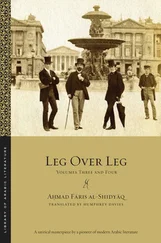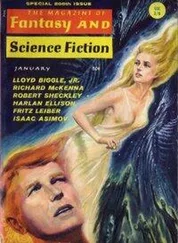92“the zaqqūm tree”: a tree that grows in Hell and whose fruit are exceedingly bitter (Q Wāqiʿah 56:52).
93“she is to be excused because she was unaware that I, in fact, was only feigning sleep”: the argument seems to be circular, i.e., she is to be excused for not visiting him while asleep because, in fact, he was not asleep.
94“paronomasia”: ( tajnīs (or jinās ), literally “making similar”): perhaps the most used rhetorical figure, it consists of deploying in proximity two words that are identical, or almost so, in the ductus but differ in vowelling and diacritics (e.g.,  “handsome” and
“handsome” and  “coarse” or
“coarse” or  “his deeds” and
“his deeds” and  “his money”)
“his money”)
95i.e., Buṭrus Yūsuf Ḥawwā, to whom the book is dedicated.
96Saʿd al-Dīn Masʿūd ibn ʿUmar al-Taftazānī (d. between 791/1389 and 797/1395) was the author of commentaries ( Al-Muṭawwal, Al-Mukhtaṣar ) on al-Khaṭīb al-Qazwīnī’s Talkhīṣ al-miftāḥ ( The Summary of the Key ) that were accepted for centuries as “the primary authoritative texts for the advanced study of rhetoric” (Meisami and Starkey, Encyclopedia , 2:751).
97Abū Yaʿqūb Yūsuf ibn Abī Bakr al-Sakkākī (d. 626/1229) is best known for his Miftāḥ al-ʿulūm ( The Key to the Sciences ). His definitions and formulations “became standard in the science of Arab rhetoric” (Meisami and Starkey, Encyclopedia , 2:679).
98Abū l-Qāsim al-Ḥasan ibn Bishr al-Āmidī (d. 370/980), whose Al-Muwāzanah bayna Abī Tammām wa-l-Buḥturī , which compares the poetry of Abū Tammām and al-Buḥturī, is “one of the most important monuments of Arabic literary criticism” (Meisami and Starkey, Encyclopedia , 1:85).
99Abū l-Ḥasan ʿAlī ibn Aḥmad al-Wāḥidī (d. 468/1076), commentator and literary critic.
100Abū l-Qāsim Maḥmūd ibn ʿUmar al-Zamakhsharī (467–538/1075–1144), best known for his commentary on the Qurʾān, also wrote in the fields of rhetoric, grammar, lexicography, and proverbs (Meisami and Starkey, Encyclopedia 2:820); the author may have had particularly in mind his Maqāmāt , which are written in “carefully crafted sajʿ ” (Devin Stewart, “Maqāma,” in Arabic Literature in the Post-classical Period , edited by Roger Allen and D. S. Richards, vol. 6 of The Cambridge History of Arabic Literature (Cambridge: Cambridge University Press, 2008), 155).
101Abū Ḥātim Muḥammad ibn Hibbān al-Bustī (270–354/884–965), also known as Ibn Hibbān, was best known as a traditionist, but one of his few surviving works is a literary anthology, Rawḍat al-ʿuqalāʾ wanuzhat al-fuḍalāʾ ( The Meadow of the Sagacious and Promenade of the Virtuous ) (Meisami and Starkey, Encyclopedia , 2:334).
102Abū l-ʿAbbās ʿAbdallāh ibn al-Muʿtazz (247–96/861–908) was a poet and critic who wrote Kitāb al-badīʿ ( The Book of Rhetorical Figures ), the first treatise covering this area of Arabic poetics (Meisami and Starkey , Encyclopedia , 1:354).
103Kamāl al-Dīn Abū l-Ḥasan ʿAlī ibn Muḥammad ibn al-Nabīh (ca. 560–619/1164–1222), a poet, probably included in the list because of his love of morphological parallelism (see, e.g., lines 14 to 18 of the poem starting afdīhi in ḥafiẓa l-hawā aw ḍayyaʿā (http://www.adab.com/modules.php?name=Sh3er&doWhat=shqas&qid=55259, accessed March 15, 2012)).
104The author probably means Jamāl al-Dīn Muḥammad ibn Shams al-Dīn ibn Nubātah (known as al-Miṣrī, “the Egyptian”) (686–768/1287–1366), a poet known for his love of punning ( tawriyah ) and a writer on literature and stylistics to whom he refers later (Volume Four, 4.17.5). However, the latter’s ancestor, Abū Yaḥyā ʿAbd al-Raḥīm ibn Muḥammad ibn Nubātah (known as al-Khaṭīb, “the preacher”) (d. 374/984–85), whose sermons in rhymed prose were regarded as models of stylistics, may be intended.
105 ghāniyah (“beautiful woman”): the Qāmūs states that the ghāniyah may be so called because she is “the woman whose beauty is such that she may dispense with adornment” ( al-ghaniyyatu bi-ḥusnihā ʿan al-zīnah ).
106“the Fāriyāq”: the name of the author’s alter ego, formed by combining the first part of his first name and the last part of the last, thus Fāri(s al-Shid)yāq.
107“monopods… monopodettes” ( nisnās… nasānis ): according to the dictionaries (which have some difficulty in distinguishing between the two), the nisnās is, among other things, “an animal numbered among the monsters, that is hunted and eaten, has the form of a person with one eye, a leg, and a hand, and speaks like a person” ( Lisān ) whereas the nasānis may be either the same as, or the plural, or the feminine, of the former.
108 al-ḥinn : a species of jinn or their dogs, or half-men half-jinn (see Volume Two, 2.4.44).
109Kufah and Basra: cities in Iraq from which emerged the two main contending schools of Arabic grammar. The author is unlikely to have meant this to be taken literally.
110The Arabic letters ḥ-m-q used in the text spell out the word ḥumq , meaning “stupidity.”
111i.e., in Lebanon.
112By the Arabic language the author means literary or formal Arabic; Syriac is the liturgical language of the Maronite church.
113“his Frankish brethren” ( ikhwānihi al-ifrinj ): i.e., the Roman Catholics of Europe.
114“turning triliteral verbs into quadriliterals and vice versa”: in another work the author provides the example of allowing the use of rafrafa instead of raffa in the sentence raffa l-ṭāʾir janāḥayhi (“the bird flapped its wings”) (Aḥmad Fāris al-Shidyāq, Kitāb al-jāsūs ʿalā l-qāmūs (Constantinople: Maṭbaʿat al-Jawāʾib, 1299/1860–1), 13).
115For example, by saying wathiqa fī-hi (“he trusted him”) instead of wathiqa bi-hi or istaʾdhana bi-hi (“he asked permission to do something”) instead of istaʾdhana fī-hi .
116“ Durrat al-thīn …”: the author mimics the extravagant rhymed book titles typical of his day.
117“the country’s ruler”: Emir Bashīr II al-Shihābī (1767–1850), ruler of Mount Lebanon, with interruptions, from the 1780s until 1840.
118“Abtholutely not” ( tuʿ tuʿ ): though the lexica do not appear to recognize this item as an interjection, the verb taʿtaʿa is defined as faʾfāʾ (“lisping”) or ratratah (“tripping over the letter t”), among other meanings.
119The interjection way way should perhaps be understood here as a reference to the words of the Qurʾān (Q Qaṣaṣ 28:82) waykaʾanna llāha yabsuṭuka l-rizq (“Alas we had forgotten that it is God Who increases the provision [of those of his servants whom He will]”) (Maududi), where way is considered by Sībawayh to be a separable particle meaning waylaka (“Alas for you!”) (see Qāmūs s.v. way ).
120“the ten head wounds” ( al-shajjāṭ al-ʿashar ): the significance of the categorization lies in the various penalties owed the victim under the rule of qiṣāṣ (“retribution”), the first five requiring no qiṣāṣ , the second from five camels to a third of the monetary penalty for murder. Al-Shidyāq in fact increases the number to eleven by adding one category (the first) in an attempt to correct an error in the original, which appears to be the Lisān (the Qāmūs contains no similar passage).
Читать дальше

 “handsome” and
“handsome” and  “coarse” or
“coarse” or  “his deeds” and
“his deeds” and  “his money”)
“his money”)










